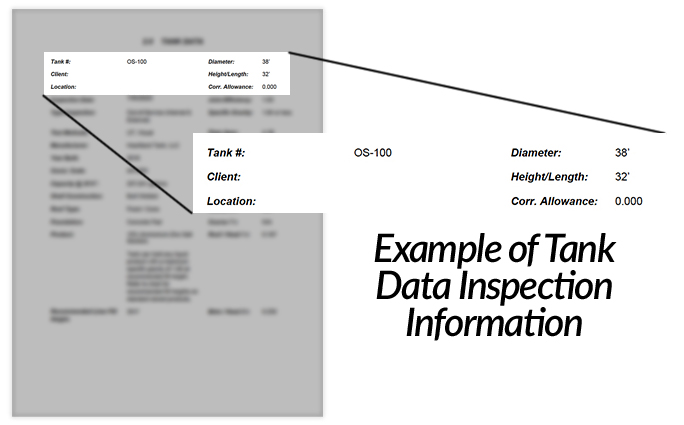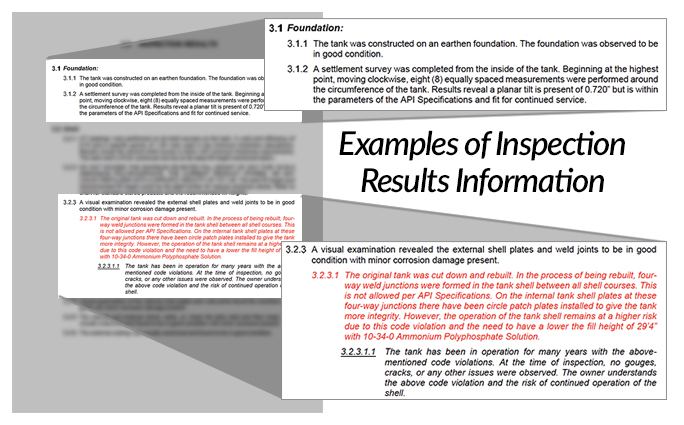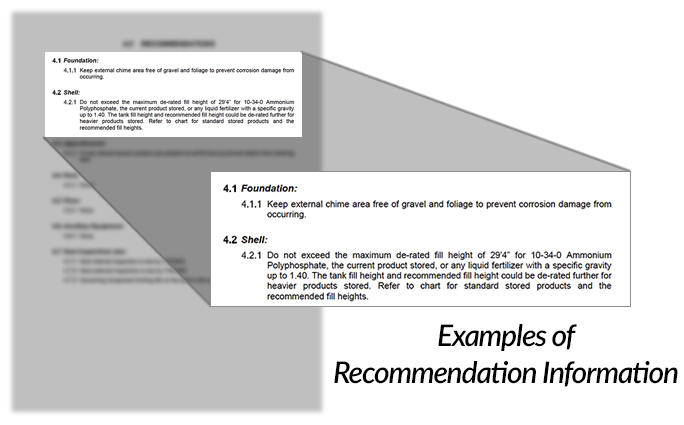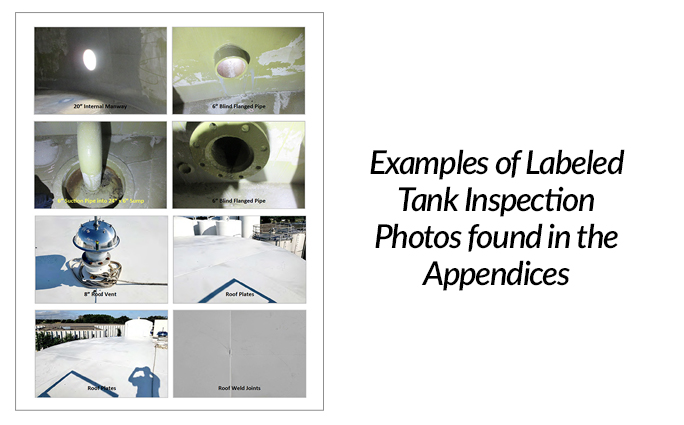As a responsible above ground storage tank owner, you’ve just scheduled your full API 653 tank inspection to be performed by a certified API-653 inspection team.
The team will provide you with a comprehensive report summarizing the tests conducted and the results. Here is a preview of the key information that will be included in your API 653 tank inspection report.
Each report contains the following sections and information:
- Executive Summary
- Tank Data
- Inspection Results
- Recommendations
- Appendices
Executive Summary
The executive summary provides a concise overview of the above ground storage tank’s status. The API 653 specification establishes minimum requirements for an above ground storage tank to remain in service and meet API specifications. The report establishes whether the tank is fit for continued service based on its compliance with the minimum API 653 requirements for the following tank components:
- Tank shell
- Roof
- Floor
- Internal PVC containment liner (if applicable)

Tank Data
This section contains basic information regarding the tank. Data will likely include the following:
- Client
- Location
- Inspection Date and Type
- Test Methods
- Manufacturer
- Year Built
- Construction Code
- Tank Capacity
- Shell Construction
- Roof Type
- Foundation
- Product
This section will also convey any changes to the recommended max fill height. This may change over time due to the corrosion of the steel plates and tank weld. The recommendation may also fluctuate due to a change in stored product, which could have a higher specific gravity.

Inspection Results
Here you’ll receive detailed descriptions of the state of the tank and liner (if applicable). Testing procedures are specified as well as results. Components of the tank inspection results include:
- Foundation
- Shell
- Appurtenances
- Roof
- Floor
- Ancillary Equipment
- PVC Internal Containment Liner

Recommendations
An API 653 tank inspection report will identify any necessary repairs and classify them as either API 653 mandatory repairs or discretionary repairs.
Mandatory repairs are required when a tank does not meet one of the API 653 specifications. Until the repair is completed, the tank will likely be restricted from service or have a reduced fill height. These repairs should be a top priority for any tank owner to restore the tank to full service.
Discretionary or suggested modifications are recommendations that, if followed, may save the tank owner money in the long run and extend the tank’s life. These modifications aim to prevent potential future damage to the tank.

Appendices
The Appendices section provides a complete record of the technical aspects of the API 653 tank inspection. It includes detailed engineering calculations, settlement survey results, steel thickness measurements, inspection drawings, photographs, and certifications of the inspection team. This serves as a comprehensive record of the tank’s condition at the time of the API 653 inspection. This detailed documentation is valuable for long-term asset management, allowing tank owners to track changes in the tank’s condition over time, plan for future maintenance and repairs, and make data-driven decisions about the tank’s lifecycle.


API 653 Inspector

Jennifer Selke
Inspection Division Coordinator
jselke@heartlandtankservices.com
(800)-774-3230 ext. 103

